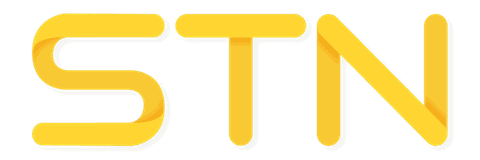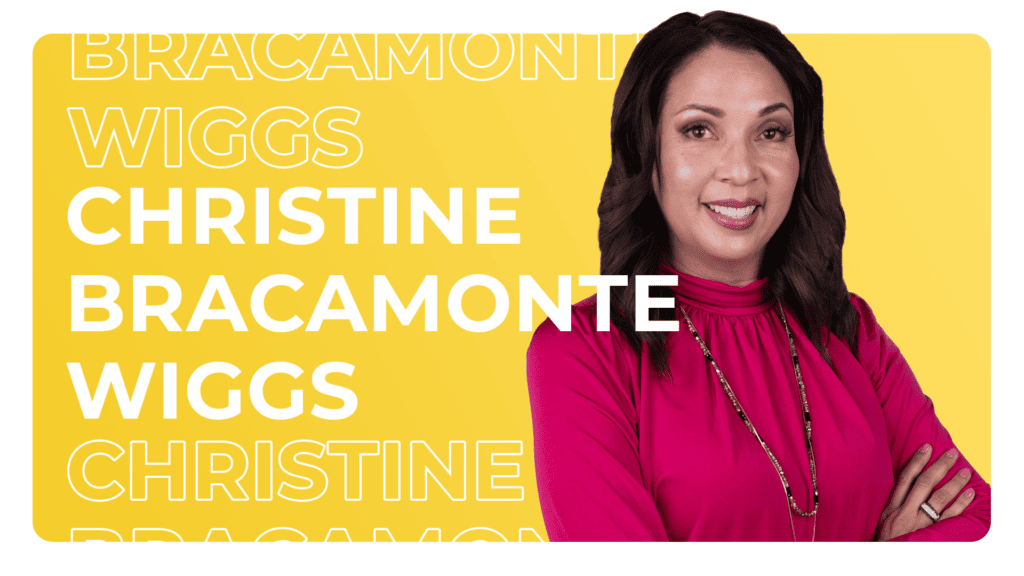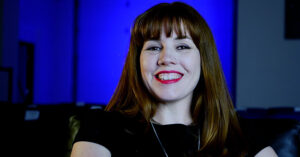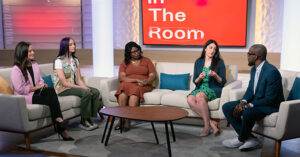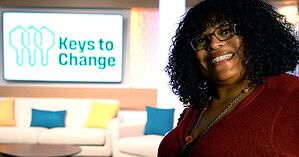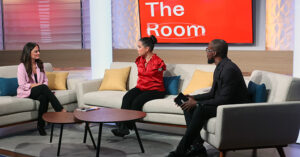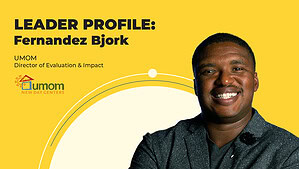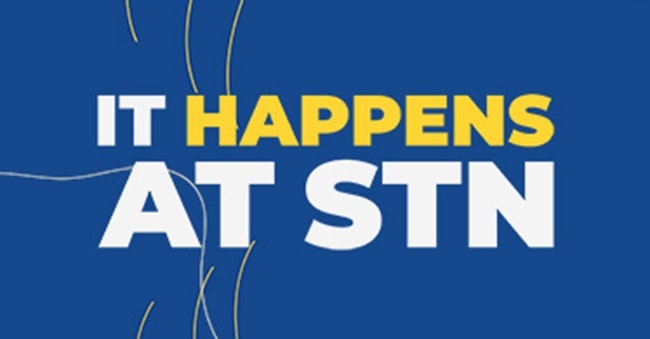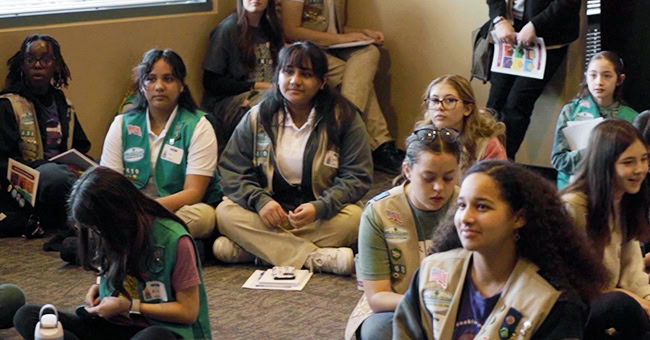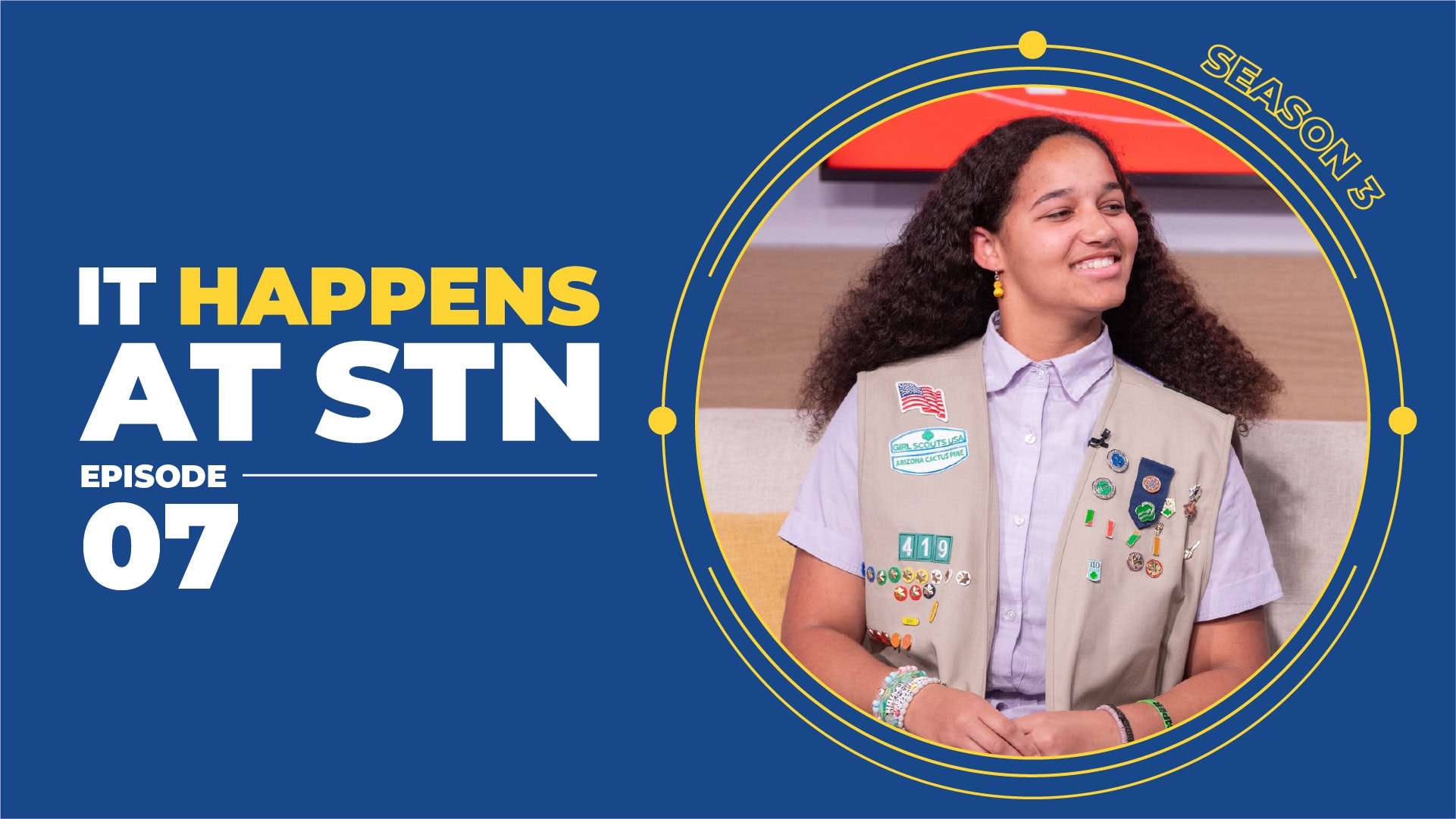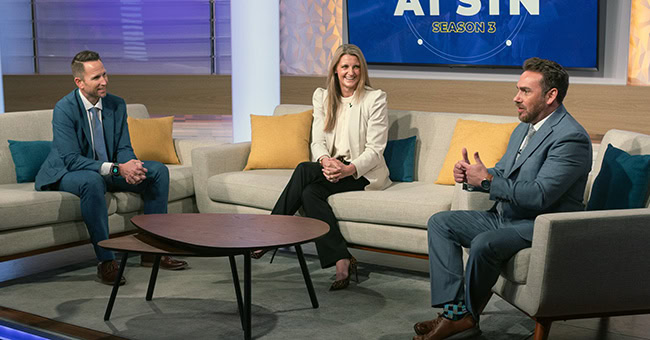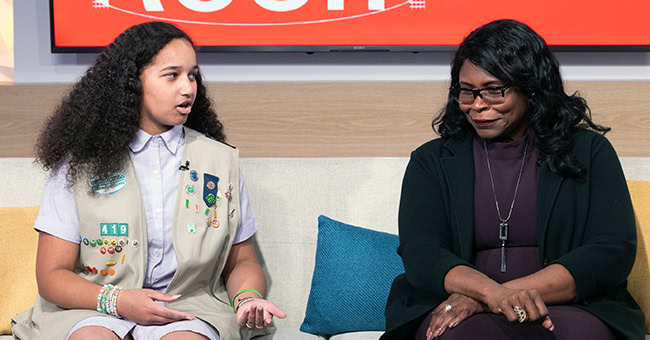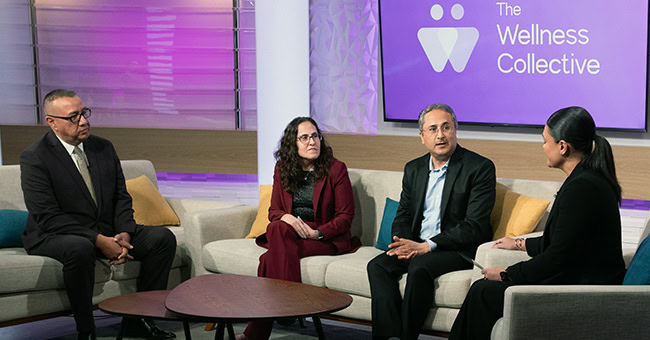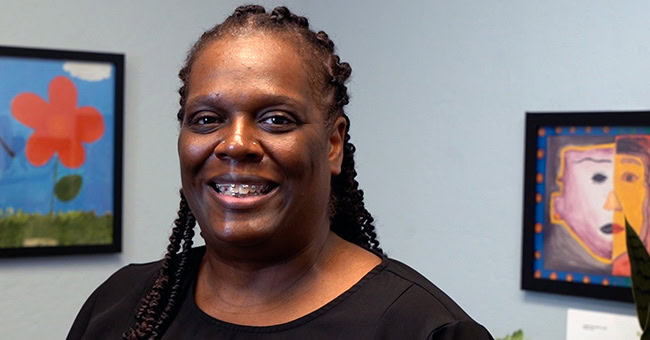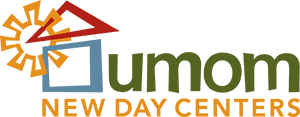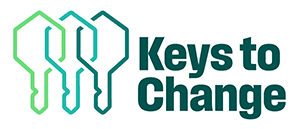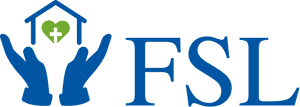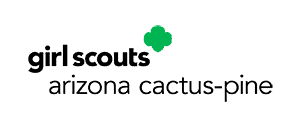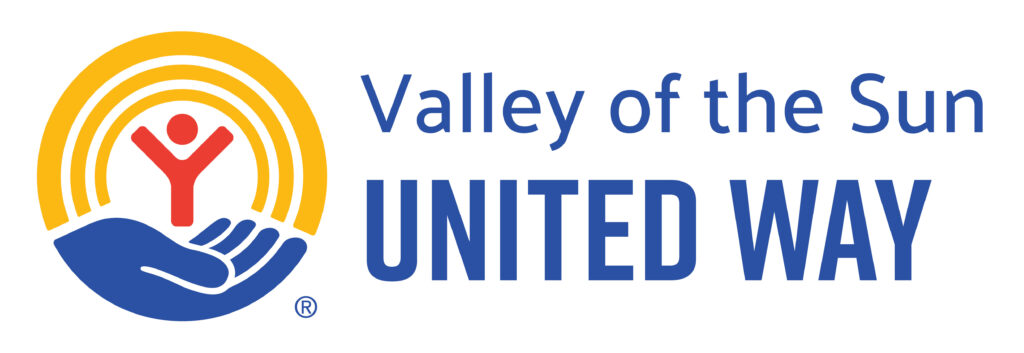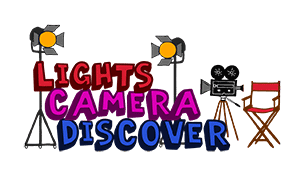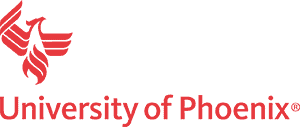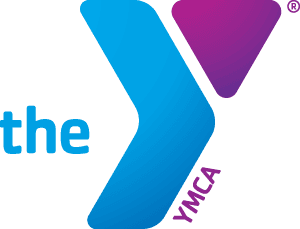Note: Since filming this episode, Dr. Christine Bracamonte Wiggs was promoted to Vice President of Community and Health Advancement and President for the Foundation for Community and Health Advancement at Blue Cross Blue Shield of Arizona.
Dr. Christine Bracamonte Wiggs’ motto is ‘impact with the heart.’ Living by this motto guided her throughout her career in public health, helping her lead Arizona through the turbulent times of the pandemic.
Currently, Dr. Bracamonte Wiggs is the Vice President of Community and Health Advancement and President of Foundation for Community Health and Health Advancement at Blue Cross Blue Shield of Arizona, a foundation that supports programs and research working to solve pressing public health problems in Arizona.
“My journey during my professional career has been to try to figure out where that sweet spot of measurable impact fueled by the power of the heart is,” says Dr. Bracamonte Wiggs.
Caring for others is something she learned from her parents at an early age. Her mother was a midwife, and her dad is a nurse practitioner; they met while her father was part of the Medical Corps working in Vietnam. She carries the lessons learned from watching her parents care for people in their community into her career and her role as a mother.
“What motivates me every single day is the work that I do, not only for the community at large and for Blue Cross Blue Shield of Arizona but, at the end of the day, it’s for my daughter,” says Dr. Bracamonte Wiggs. “I want my daughter to know her mom cares about the community, and it’s not just a job.”
Erin Moran:
Why did you decide to pursue a career in public health?
Dr. Christine Bracamonte Wiggs:
I think it is because I grew up in a family of healers and helpers. My mom was a midwife by trade and my dad is a family nurse practitioner. So I grew up with the orientation of understanding the importance of health and healthcare.
In college, I went down the traditional pre-med path thinking I’d be a physician and continue helping people in the same kind of capacity as my parents. However, right before I was going to start my search for graduate schools and then on to medical school I was introduced to the world of public health.
What was so pivotal about my introduction to public health was it gave me the same opportunity I was looking for to help people, but instead of the one-to-one ratio physicians work with, it allowed me to promote health on a community level.
It was a very exciting and also a scary realization. It is hard enough to promote health one person at a time. It’s complicated and it’s tough going. It got me thinking about how you promote health in a community that is full of so many diverse individuals. To me, that was an opportunity I wanted to explore, I set my course and have enjoyed public health ever since.
EM:
You come from a diverse background, talk about your family and what growing up was like for you.
CBW:
It is essentially the all-American story, but it begins elsewhere. My mom, who is a midwife, is from Vietnam, and my dad went there as part of the Medical Corps. They met, fell in love, returned to the United States, and the narrative revolves around the hard work my parents put in, juggling two or three jobs to raise my two sisters and me.
Growing up, our parents ingrained in us the value of hard work and encouraged us to find something we’re passionate about. They emphasized the importance of education and giving back to the community. Both my parents, especially my mom, were dedicated to community service, and that ethos extended to us as kids. Looking back, all of my experiences working with my parents in our community laid the foundational groundwork and set the trajectory for the work I am doing today.
EM:
You had the opportunity to do some community work while you were a student at the University of Arizona. What type of work were you doing while you were a student?
CBW:
I was a resourceful graduate student. I took a job at the University of Arizona as a staff member to offset tuition costs. Initially, it seemed like a practical decision to pursue my degree while at the time same time working for the university to reduce my tuition. However, what I didn’t anticipate was the transformative impact that working in the field related to my studies would have on me. I was employed by a prestigious university, but instead of staying within the academic ivory tower, I was stationed in an offsite research office in South Tucson. This turned out to be a crucial experience because I started from the bottom and worked my way up to the top.
In the first few years, I was involved in following research participants for longitudinal studies spanning three to five years. What stood out to me was the opportunity to work directly in the community I was serving. The experience allowed me to move beyond viewing participants as faceless entities and truly understand them, recognizing their strengths within the communities they lived in but also recognizing and understanding the challenges they faced. Collaborating with the community to enhance overall health became an eye-opening experience.
The hands-on work I was involved in shaped my perspective, and emphasized the importance of not assuming to have all the answers but rather sitting down, listening attentively, and understanding the community’s needs and desires.
EM:
You told me once that you want to make an impact with the heart. What does that mean to you?
CBW:
Impact with heart represents the culmination of my entire career. It’s about staying grounded in public health, utilizing the power of data to guide decisions and allocate resources.
For the foundation, it means directing funds, subject matter experts, and other resources with precision. However, the crucial element is the heart. Approaching challenges with compassion, recognizing that solutions aren’t solely driven by data. True resolution comes from sitting down and listening to stories, blending both quantitative and qualitative data. The heart piece is about taking the time to understand. Throughout my professional journey, I’ve aimed to find the sweet spot where measurable impact intersects with the power of the heart.
What excites me about my work is the constant journey. There’s no fixed map, and I don’t know where I’ll be in five or ten years. It’s about being responsive, using my experiences and those around me to discover the ever-changing sweet spot, depending on daily needs. It is what motivates me every morning. The pursuit of sparking joy through work that strives for the sweet spot of measurable impact, infused with compassion and heart.
EM:
Currently, you are the Community and Health Advancement and President, Foundation for Community and Health Advancement at Blue Cross Blue Shield of Arizona.
How did you get into the role you are in today and what does it mean to you both personally and professionally to do work on such a large scale?
CBW:
The Blue Cross Blue Shield of Arizona Foundation for Community and Health Advancement was launched in January 2022. The launch of the foundation allowed us to formulate our commitment to philanthropy. While we have a longstanding tradition of dedicating ourselves to the well-being of our state and making significant philanthropic investments in Arizona, the foundation enables us to intensify our efforts. It provides a platform to focus our resources, particularly in areas that can make a substantial impact, such as mental health, substance use disorder, chronic health conditions, and health equity.
Our approach extends beyond addressing the state’s most pressing health issues. We are committed to driving towards greater health equity, ensuring that everyone has an equal opportunity to access care and achieve optimal outcomes. The foundation operates by collaborating with other organizations to tackle complex community health issues. We recognize that no single organization possesses all the resources to solve these challenges. Together, we identify opportunities, address gaps, and ensure the right people are at the table to help solve pressing community health systemic problems.
For me, the professional opportunity provided by the foundation lies in merging my background in public health with the intentional power of corporate social responsibility and philanthropy. The collaborative effort aims to make a significant and measurable impact in the community, infused with compassion and a genuine commitment to heart-centered work.
EM:
As a leader with a diverse background, your perspective brings tremendous value to the landscape. Can you share what it means to you in terms of your leadership style and the significance of diversity, equity and inclusion in your field and the work that you do in the public health space?
CBW:
Diversity, equity, and inclusion have always been critically important in my professional and personal life. Growing up in a biracial home, I often sought examples of diversity and yearned for a sense of inclusion, even if it meant occasionally feeling like the odd person out. However, as I’ve matured, I’ve come to appreciate the value of diversity in different perspectives and experiences. No one can replicate my unique background, and when I bring my voice to the table, it adds a critical element to the conversation.
The same acknowledgment extends to my role within our organization at AZ Blue. We recognize the importance of having employees who are not only dedicated to our mission but also bring diverse perspectives, expertise, and have the courage to voice them. A robust diverse, equitable and inclusive approach within our organization is crucial to the work we do in our community.
Externally, I think about who are those partners that support and align with our DEI approach. We want to make sure we are including others who value and welcome a diverse perspective. The issues we are trying to solve are so huge and complicated that we need the innovation of diverse perspectives. We need individuals who have lived experiences that are unlike mine, unlike yours, and unlike someone else’s at the table. It allows us to think through the best ways to approach some of the big problems we face in Arizona.
EM:
We had talked earlier about the initiatives your team spearheaded during the pandemic, and how evident it was that the COVID-19 virus brought a sense of shared vulnerability, affecting us all, albeit with differing impacts. Can you delve into the work, particularly the significant efforts you led, and share insights into how this contributes to the lasting legacy in our community?
CBW:
During the pandemic, when our state realized we would have access to vaccines, Dr. Rist, who was leading efforts at the Arizona Department of Health Services and is now our Chief Medical Officer at AZ Blue, reached out to Pam Kaha, our president and CEO. Dr. Rist expressed the need for a committed community partner willing to experiment and address a pressing community need, even though all the answers weren’t available. Without hesitation, our organization wholeheartedly agreed. Initially, we anticipated a short-term initiative. Within just five days, we established the nation’s first 24/7 drive-through vaccine clinic at State Farm Stadium.
Initially, we had some ideas on how to set it up, but the reality was no one knew what to expect or how to navigate this unprecedented situation. It was at the height of isolation, and getting the courage to step outside our homes to contribute to the greater good was paramount. My team played a crucial role in managing the operation of all the volunteers at State Farm Stadium. We needed 300 to 350 volunteers every single day to administer vaccines. It became a seven-day-a-week commitment that lasted for about three months.
What fueled our work, especially on those seemingly endless days, was the awareness that we were making a measurable impact infused with heart. It felt like the right thing to do. Seeing people’s gratitude for the opportunity to access something they believed would contribute to their health was incredibly fulfilling. It is what our company is all about and it will always be our focus. Looking back, those days were some of the longest but also the most rewarding, and it’s gratifying to know I played a small part in some impactful work.
EM:
When you think about how you want people to remember you and what you want your daughter to see, what does that look like when you’re thinking about how people will remember you and the legacy you leave behind?
CBW:
That is a wonderful question because it is what motivates me every day to do the work I am doing, not just for the community and Blue Cross Blue Shield of Arizona but, ultimately, for my daughter. The legacy I hope to leave is not just in the phrase “measurable impact with heart,” my wish is for people to know I lived by that motto. I want my daughter to understand and feel that her mom genuinely cares about the community and that it’s more than just a job. I often talk about sparking joy, and I want her to see the work I do brings joy despite its challenges.
Perseverance is a key aspect, whether it’s managing a vaccine clinic or navigating a regular Monday. The difficulty of the work is what makes it meaningful for me. I am constantly trying to think innovatively, working to find responsive and timely ways to meet the community’s needs while being a responsible steward of resources and a good community partner. It’s about not only relying on hard facts or numbers but feeling committed to the cause and doing the right thing simply because it’s the right thing to do.
I hope my daughter sees and is encouraged by understanding that life isn’t always easy. It’s about what you bring to the table each day and how hard you’re willing to work. I hope I am showing her if you work hard you can get great things out of the work you do.
